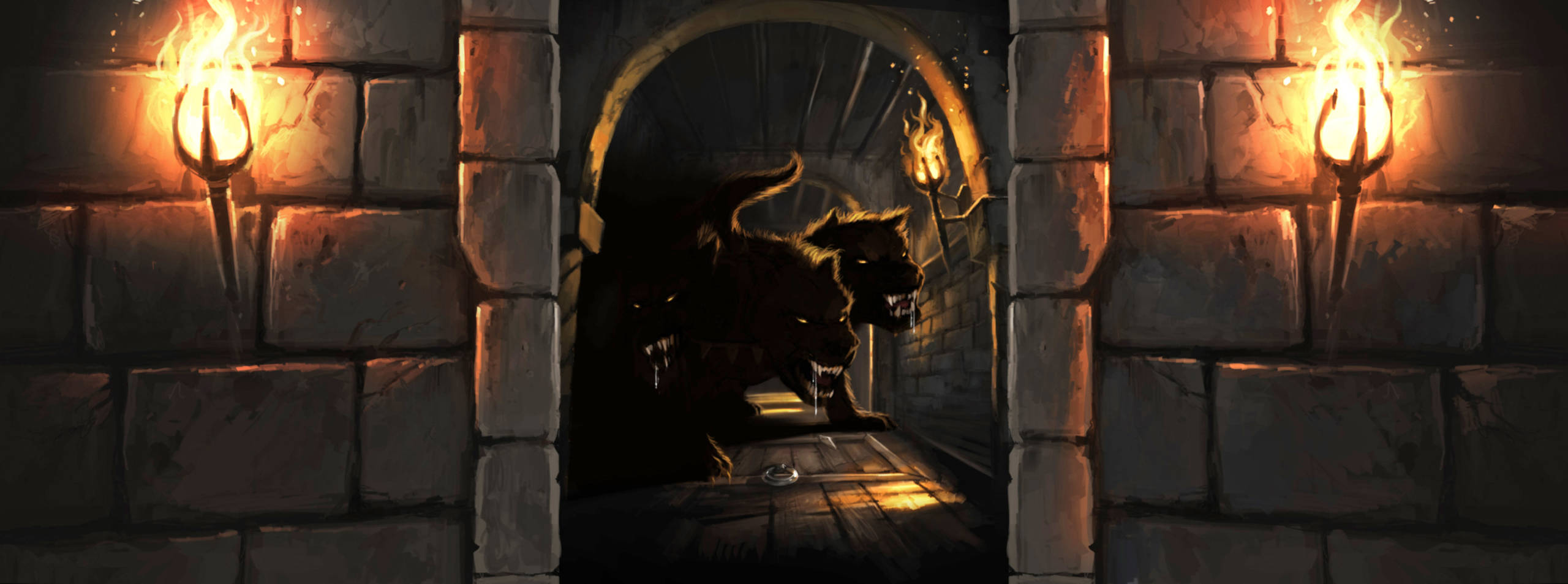The three-headed dog
There are examples of many-headed creatures throughout mythology, like the Hydra, the chimera and Cerberus – the dog that guards the gates of the Underworld and eats anyone who dares to leave.
Descriptions vary; Hesiod says the creature has 50 heads but Cerberus is often depicted with just the three. Seneca also writes that the hell hound has a serpent for a tail. One hero from Greek myth, Orpheus, used music to lull Cerberus to sleep and sneak into Hades to save his dead love Eurydice, so this monstrous mutt does have his weaknesses.
Fluffy was also partial to a spot of music. J.K. Rowling revealed on Twitter that the three-headed pup who guarded the Philosopher’s Stone was eventually ‘repatriated to Greece’.

The Basilisk
Reputed to have the power to kill with a single glance, the Basilisk’s name comes from the Greek word basilískos or ‘little king’.
One of the earliest references to this beast was Roman naturalist Pliny the Elder who described it as ‘being not more than 12 fingers in length’ with a white spot on its head that looked like a crown – hence its name. Legend has it that you can dispatch a Basilisk with the odour of a weasel.
The Basilisk found within the Chamber of Secrets was responsible for the death of 'Moaning’ Myrtle Warren, as well as the Petrification of Hermione, Colin Creevey, Justin Finch-Fletchley and Nearly Headless Nick. It was said to flee ‘only from the crowing of the rooster, which is fatal to it’.
In this image:
The Hippogriff
Half-horse, half-giant eagle, the Hippogriff is a representation of the god Apollo and has often been depicted in art.
French philosopher Descartes used Hippogriffs as a crucial example in his Meditations, arguing that because we can understand the notion of a half-horse, half-eagle we somehow prove its existence. Deep.

The phoenix
Phoenixes can burst into flames and then rise up, regenerated, from the ashes. They are one of the most enduring and inspirational creatures in mythology. The story of the phoenix stretches back so far, it has been told by everyone who is anyone in the mythological Hall of Fame. From Herodotus (extremely wise Greek historian, a mate of Socrates) to Ovid (famous Roman poet) and Pliny the Elder (yup, him again).
In the Harry Potter stories, the only known antidote to Basilisk venom is phoenix tears; which as Hermione tells us are ‘incredibly rare’. Luckily there is a phoenix at Hogwarts – trust Dumbledore to have possibly the coolest pet ever.


